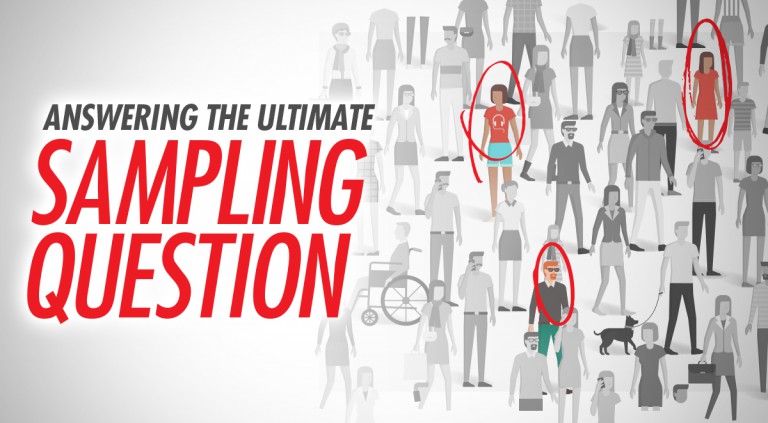
Answering the Ultimate Sampling Question
When we undertake marketing research, we spend a lot of time worrying about sample. Do these questions sound familiar?
“What’s the right sample size?”
“How do I increase response rate to get the sample size I need?”
“Is the data in my list accurate and up-to-date? “
“How will a low response rate or a small sample size impact my results?”
But we often neglect to answer the Ultimate Sampling Question: “Who should I sample?”
The key to actionable marketing research results is asking the right questions of the right people. Too often in marketing research, we default to sampling from the list we have as opposed to getting the list we need. Customer lists are great for answering certain questions. Prospect lists are great for answering different questions.
But perhaps the most important questions are those you need to ask of people who are neither your customers nor your prospects, or those who were customers/prospects and have not come back to purchase again.
Let’s look at the different types of questions each type of sample can answer:
| Customers | Prospects | Lost or Non- Customers/Prospects |
|
· Loyalty metrics · Actual product and service experience / satisfaction · Evaluation of sales team · Evaluation of ordering and delivery processes · Pricing/Value · Their image of you |
· Loyalty to competitors · Product and service experience for your competitors · Evaluation of sales team · Pricing/Value compared to competitors · Brand image/reputation (yours and competitors) |
· Pricing/value compared to competitors · Brand image/reputation in the marketplace · Reason for not choosing you · Reasons for preferring competitors |
Listening only to your customers and prospects can give you a very skewed view of your position in the marketplace. In addition to the fact that they know the most about you, there is also the possibility that they will not answer honestly if they know that you are sponsoring the survey. There is always the concern that customers, due to their personal relationship with you or your employees, will only give you the answers they believe you want to hear. You have to obtain a complete sample source drawn from the entire industry to understand the big picture for your products, services and brands – and to find out what your customers believe about you.
Third party, external sample source providers can provide exactly the accurate, vetted, up-to-date lists of your total marketplace that you need. Using external lists ensures that you ask all of the people whose opinions matter to you, whether or not they are currently doing business with you. Many of these companies will also assist you with the research, ensuring that no bias is introduced through your sponsorship and that response rates are appropriate to the topic, length and methodology of the survey. Third party samples can also be used in tandem with your customer and prospect lists, giving you valuable information about differences in the three groups that you should address with marketing strategies and communications.
So, the next time you think about starting a marketing research project, spend some time on the front end talking through the “ultimate sampling question” and the kind of answers you are likely to get from the target audience. If you are going to take the time and resources to do marketing research, make sure you get accurate information that will yield insights to drive business success.
